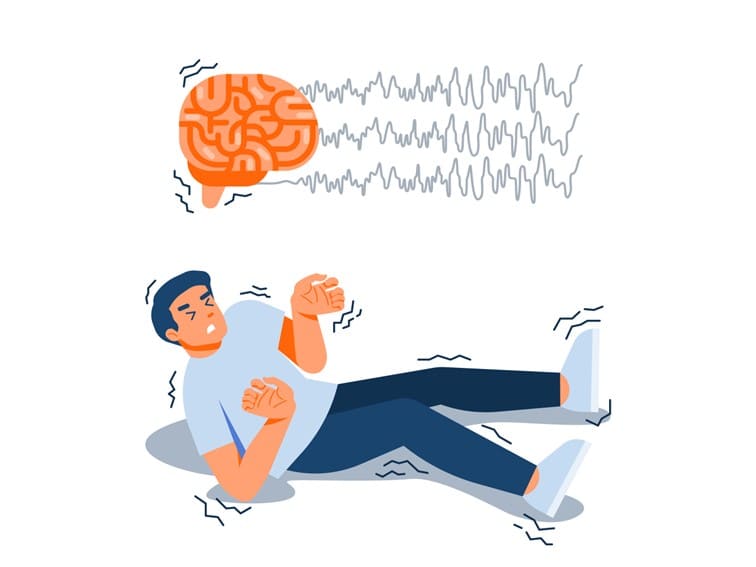Is it possible to cure epilepsy permanently?

Individuals and their families have shown interest and worry about, a neurological illness marked by recurring seizures. “How long does last in life?” is a frequently asked question. We will dig into the complexities of, its prognosis, and the variables that determine the length of this ailment in this detailed post. Our goal is to present you with a complete grasp of path inside one’s life, not simply a solution to this question.
Pregabalin 50 mg Capsule is commonly used to treat. It is an anticonvulsant medication that works by reducing the release of certain neurotransmitters in the brain, which helps to decrease pain signals and provide relief for those suffering from.
Epilepsy Definition
Before we go into the length of, let’s first describe it. is a chronic neurological illness that disrupts normal brain function, resulting in recurring and unexpected seizures. These seizures might be mild or severe, manifesting as convulsions, altered awareness, or even subtle muscular twitches.
Different Types of Epileptic Seizures
Seizures are not a one-size-fits-all condition. They come in a variety of shapes and sizes, each with its own distinct personality. Understanding these seizure types is critical in determining the length of:
- Partial Convulsions
Partial seizures, also known as focal seizures, start in one part of the brain. The person may have odd feelings, movements, or emotions. Partial seizures may last anywhere from a few seconds to many minutes. - Seizures in general
From the start, generalized seizures attack the whole brain. These are further classified into many categories, which include:
Seizures of Tonic-Clonic Origin
Tonic-clonic seizures, often known as grand mal seizures, are characterized by loss of consciousness, muscular rigidity, and subsequent jerking or convulsions (tonic phase). These convulsions usually only last a few minutes.
a. Seizures in Absence
Absence seizures, also known as petit mal seizures, are short periods of gazing into space or making tiny bodily movements. They are often brief and may go undetected.
c. Atonic Convulsions
Atonic seizures are characterized by an abrupt loss of muscular tone, which causes the sufferer to fall or drop their head. These convulsions are often transient and may lead to falls.
Pregalin 50 mg is a medication used to treat. It contains the active ingredient Pregabalin, which belongs to the class of drugs known as anticonvulsants or antiepileptics.
Epilepsy lasts for a long time.
Now that we’ve covered the many forms of seizures, let’s get to the main point: how long does endure in life? The length of varies greatly from person to person and is impacted by a number of variables, including:
- Epilepsy Disorder
The kind of syndrome a person has may have a big influence on the length of their disease. Some syndromes respond well to therapy and may go into remission, whilst others may last a lifetime. - Treatment Effectiveness
The efficacy of epilepsy therapy is essential in determining its length. Many people with can manage their seizures with drugs or other treatments. Finding the correct treatment regimen, on the other hand, may take some time for some people. - Age of Inception
The age at which initially appears may also influence its length. Childhood may resolve with age, although adult-onset may be more chronic. - The Root Causes
may be caused by a variety of circumstances, including head trauma, infections, or a hereditary susceptibility. Understanding and resolving the underlying cause might affect how long the disease lasts. - Addictions
The presence of additional medical disorders, known as comorbidities, with might complicate the disorder’s care. Managing these comorbidities is critical in determining the overall length and quality of life for patients.
Obtaining Remission
It’s crucial to recognize that many people with have periods of remission. Remission is defined as a considerable decrease in the frequency and severity of seizures or full seizure cessation. Remission is often the main objective of therapy.
Conclusion
Finally, the length of throughout a person’s life is a complicated and personal issue. Factors such as the kind of, treatment effectiveness, age of onset, underlying causes, and comorbidities all have an impact. While is a permanent illness for some, with adequate care, many people may achieve remission and live full lives.
Understanding the complexities of is critical for people and their families to successfully traverse this path. If you or a loved one has, it is critical that you speak with a healthcare expert who can give personalized counseling and treatment alternatives.



